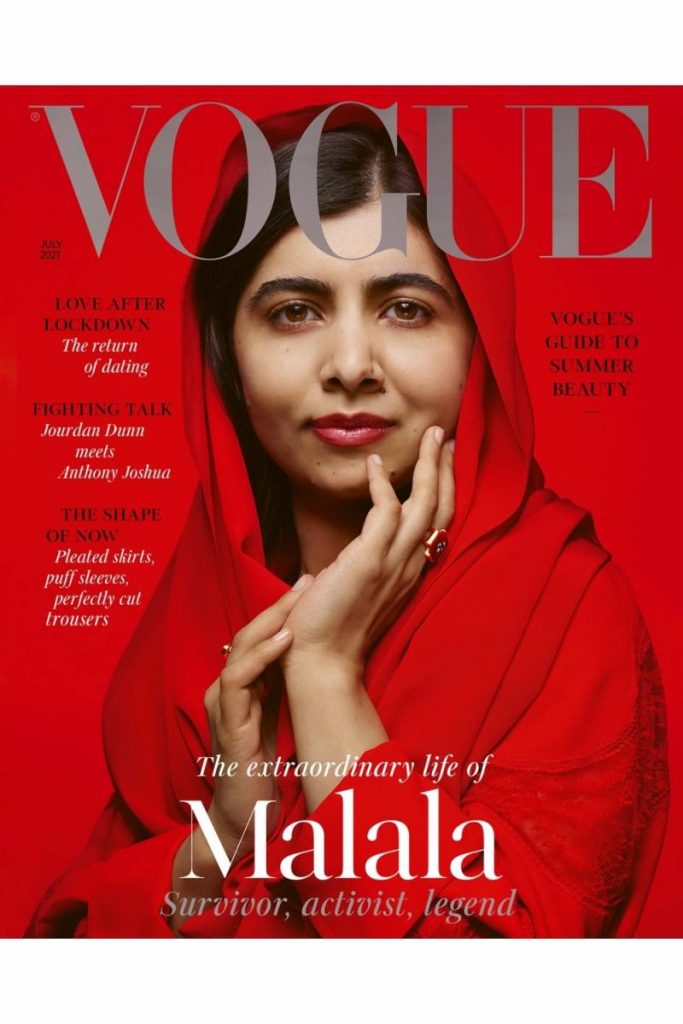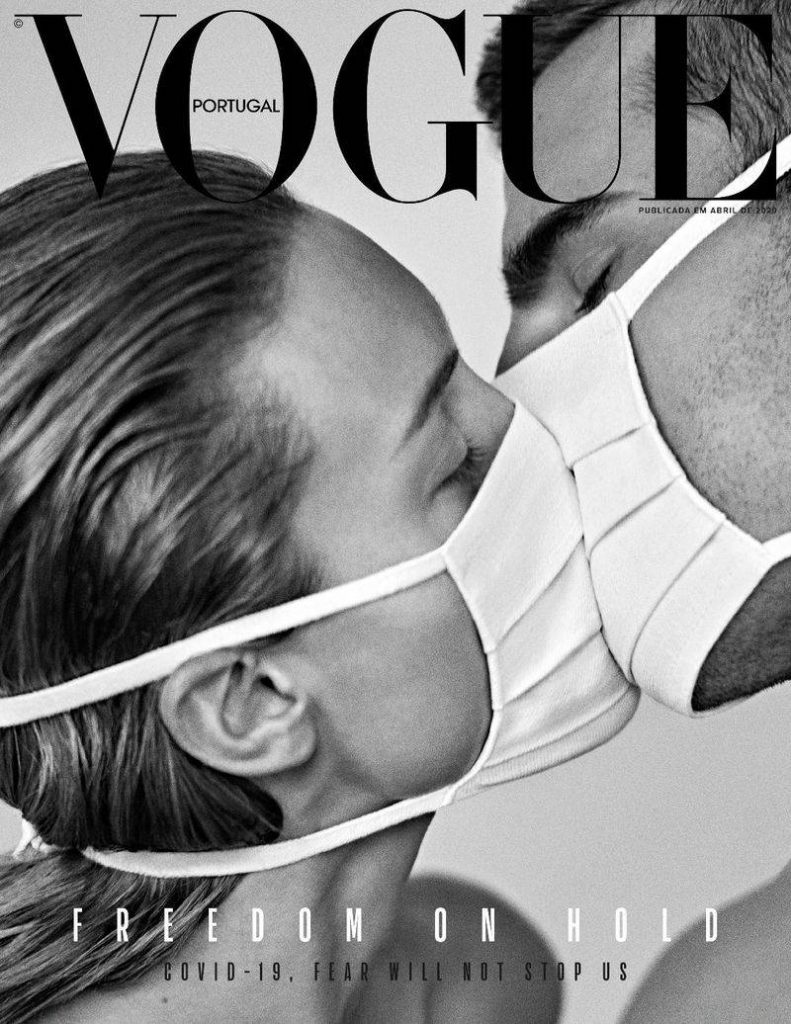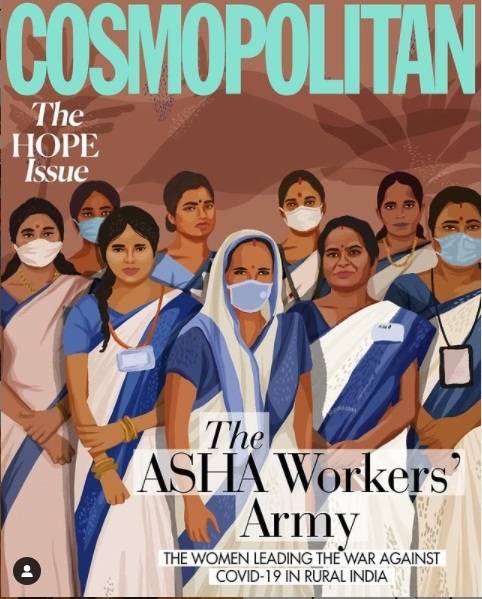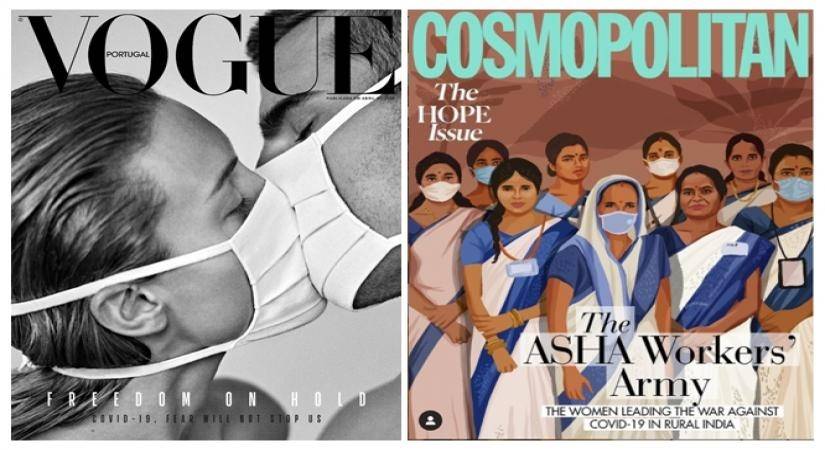Baishali Chatterjee, ex-Managing Editor of Femina, India believes that magazines today are taking this “bold” step to cater to the changing perspective of the consumers…writes Puja Gupta.
The whole fashion world is stuck with Covid, but the efforts to boost it back are on the way by the people in the field. Glossy and glamorous — this is how we usually describe a fashion magazine cover that was until last year. Traditionally, a fashion magazine features a supermodel or a celebrity face — most often a Bollywood, Hollywood, or sports star dressed in sensational clothes, with hair and make-up on point.
But ever since the world was affected by the Covid-19 pandemic, things have changed. The global battle against the virus has been overwhelming mentally, physically, emotionally and has taken a toll on frontline workers in every nook and cranny. Popular magazines like Vogue, GQ, Cosmopolitan, Vanity Fair and Harper’s Bazaar among many, chose to the unconventional route — they became more inclusive with their covers and echoed the sentiments of the people.

Most recently, the cover of British Vogue’s July 2021 edition features Pakistani activist Malala Yousafzai. For the all red cover, the world’s youngest Nobel Prize laureate, Malala, is styled in a red shirt dress and headscarf by Stella McCartney.
“Fashion has long been a reflection of the times. Be in personal, political or economic,” says Nonita Kalra, former Editor of Harper’s Bazaar, India. Adding, “The pandemic has not just highlighted this, it has also brought into sharp focus the fact that all communication must be sensitive to the current environment.”
Here’s a look at all the covers we can’t get enough off, which are from tone deaf in these tough times:
In April 2020, Vogue Italia released a blank white cover that imD,,Nagined a life in a post pandemic world. Similarly, Vogue Portugal in the same month released a cover of two models kissing while wearing face masks to represent life in the times of social distancing.

In August 2020, all 26 editions of Vogue united to release the Hope Issue. Interpreted in their own way, it focused on the future of the world.
This month, Cosmopolitan India introduced ‘The Hope’ issue on Instagram, it features a series of six covers dedicated to real-life heroes who have shown tremendous courage and kindness during these difficult times.
Nandini Bhalla, Editor of Cosmopolitan, India tells: “Our decision to break the mould was driven by a need to amplify the real heroes around us: the ones who are making a difference, driving change, and inspiring millions of women and men. At its core, Cosmopolitan is a fashion, beauty, and lifestyle magazine for young women. But it has also always been a magazine that champions equality, courage, and kindness.”
She adds: “Last year has been devasating for many of us, and at this time, what we want to feel is a sense of hope. A light at the end of this dark tunnel. Cosmo India’s illustrated covers come with this message of hope… a reminder that there is goodness in the world, through these voices that help restore our faith in humanity.”

The six covers feature: India’s healthcare workers, Harteerath Singh from the Hemkunt Foundation who provided ‘oxygen langars’ and assistance to thousands of people, ASHA workers in rural India and good samaritans — from auto rickshaw drivers who converted their autos into makeshift ambulances, to police officers, teachers and animal-rights workers.
Baishali Chatterjee, ex-Managing Editor of Femina, India believes that magazines today are taking this “bold” step to cater to the changing perspective of the consumers.
She says: “When I was working in the magazine three years ago, Bollywood was still a big seller no matter what content we wanted to do. We had to cater to what our audiences wanted. But now, maybe the pandemic has shifted people’s perception, and made people realise that it’s the people who are actually making a difference. So people like Malala are finding themselves on the covers of magazines. And people are realising that their idols need to shift from just Bollywood and entertainment to the real people who are making a difference and saving people’s lives.”
Chatterjee adds: “I think that it is very brave for magazines to be taking the stand and showcasing this change. This speaks well of us as an audience. It’s like a vicious cycle of foresight, we create the kind of content that audiences want, and then audiences stream the kind of content that is given to them.”

Also, the whole digital revolution that print media has undergone gives the opportunity to play around and experiment. “You reach so many more people, your audience is far more diverse. One single outlet can have multiple covers in one month, unlike earlier when we had to close the magazine cover three three months in advance,” she says.
Asked if this is going to be the future, Kalra, who is currently serving as Editor-In-Chief, Tata CLiQ Luxury, answers: “Going forward, I think covers will have to be symbols of solidarity, messages of hope, and signals of optimism. Largely because the reader wants to be treated with sensitivity and intelligence.”
ALSO READ-40 plus fashion thoughts
READ MORE-Cindy Lauds Indian Fashion

Leave a Reply